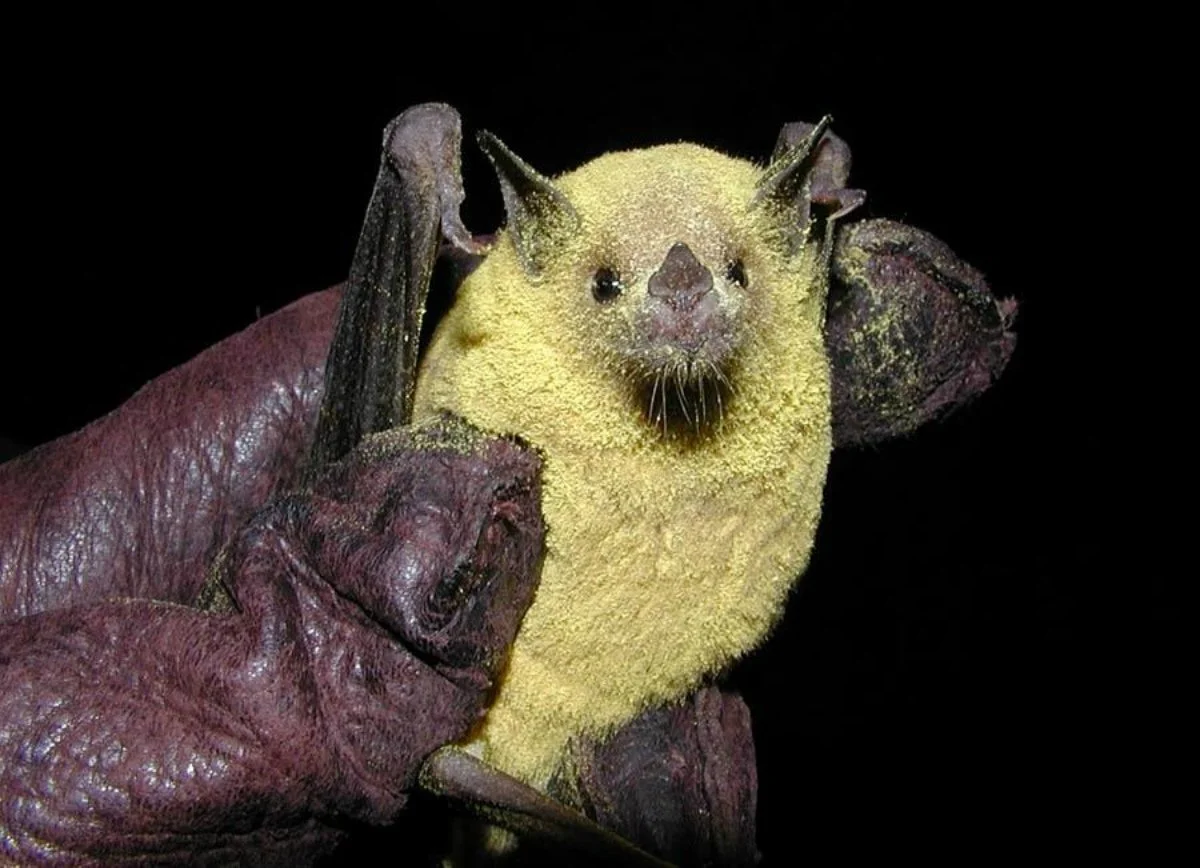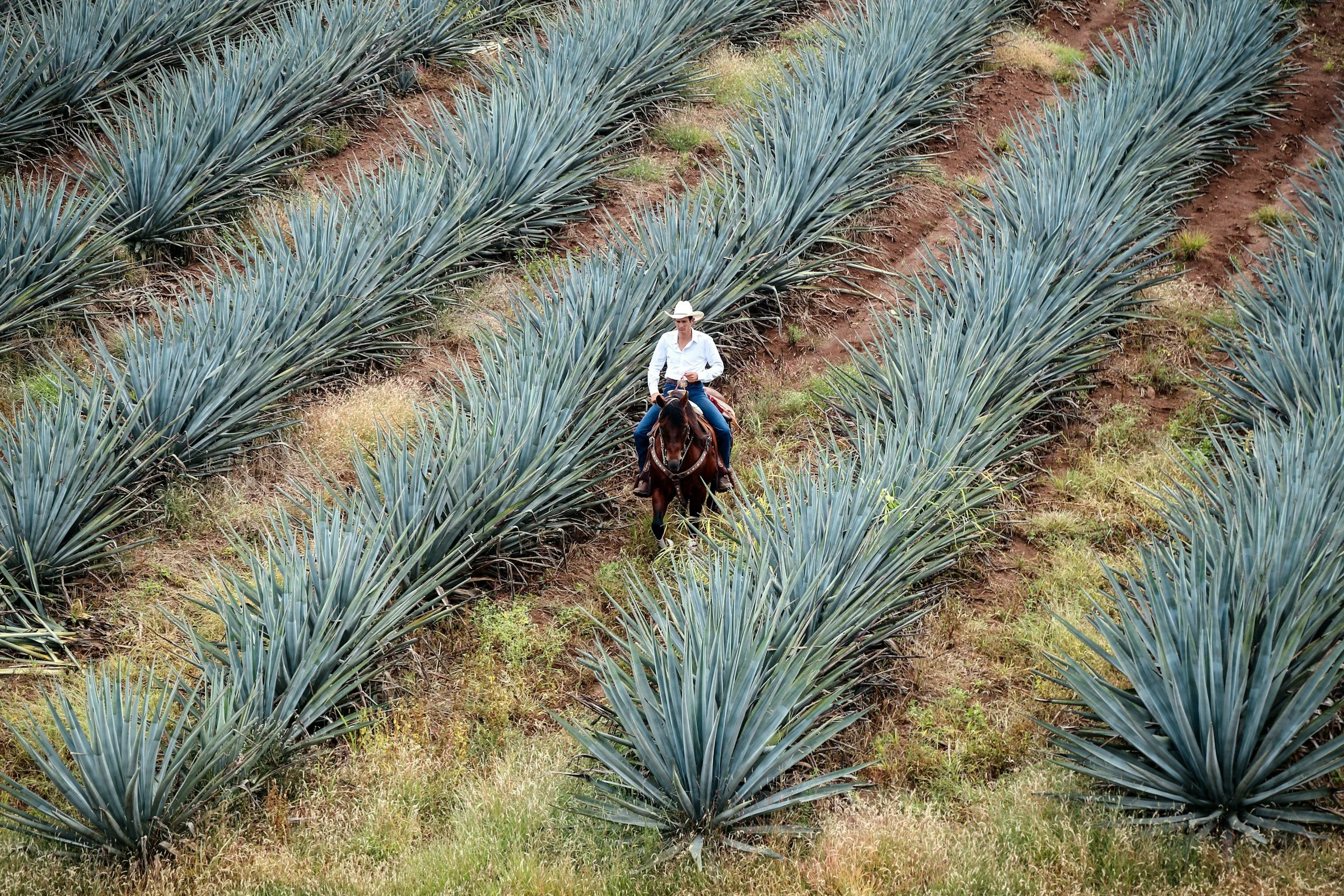Pollinators of the Night: How Bats Sustain Ecosystems, Agriculture, and Tequila
By Chynna Hawes
August 19, 2025

Mexican long-tongued bat (animalia.bio, USFWS)
When you enjoy a margarita or a glass of tequila, you’re benefiting from the nocturnal work of an often-overlooked pollinator: the long-nosed bat.
These nectar-feeding bats are essential to the life cycle of the agave plant, pollinating its flowers as they migrate across Mexico and the U.S. Southwest. Their unseen work helps sustain the genetic diversity, health, and sustainability of agave populations. Their service is therefore integral to the future of the tequila industry, valued at $10-14 billion globally today and expected to double by 2030.
Undervalued and Overlooked but Essential
In the U.S., bats are perhaps better known for their pest control services.
In one night, a single bat can eat thousands of crop-damaging insects, reducing the need for chemical pesticides, lowering costs for farmers, and at the same time, supporting the health of other pollinators. A study estimated the service of pest-eating bats was valued at approximately $3.7 billion annually.
It’s far easier to track how many bugs a bat eats than how many flowers it pollinates.
Double so when that pollination service happens at night and often in highly complex tropical ecosystems. But fruit bats are important pollinators for over 500 plant species around the world — including economically important and hyper-local crops like mangoes, guavas, durians, wild bananas—and agave. As pollinators, bats help improve fruit yield and quality. Over time, they support genetic diversity that makes crops healthier, more resilient and more sustainable. Studies in Thailand, Cambodia and Indonesia have shown that bats contribute over $137 million annually through pollination of durian and other “night-flowering” plants. Durians, despite their pungency, is a billion-dollar export for Southeast Asia. But compared to bees and butterflies, bat pollination services remain under-researched.
Nectar-feeding Bats are at Risk
A Lesser long-nosed bat (Leptonycteris yerbabuenae) covered in yellow pollen (Wikimedia.org/ NPGallery)
There is a growing political acknowledgment of biodiversity’s role in global stability.
For the first time in recent years, biodiversity has appeared in G20 communiqués, and global leaders are beginning to recognize that economic systems are fundamentally dependent on natural capital. Regulatory initiatives such as the Taskforce on Nature-related Financial Disclosures (TNFD) aim to provide companies and investors with a framework to assess and disclose nature-related risks and dependencies. This complements other frameworks such as the Global Biodiversity Framework under the UN Convention on Biological Diversity, which sets targets—such as conserving 30% of the planet by 2030.
However, while the policy landscape is evolving, implementation remains slow, fragmented, and underfunded. Political will must be matched by tangible action and capital mobilization at scale.
Conservation and Commerce – a Role for Industry
One promising industry-led response is the Bat-Friendly Tequila and Mezcal initiative, which encourages producers to let a portion of their agave plants flower—the only time bats can feed on their nectar and naturally pollinate the crops. In contrast, commercially raised agave is harvested before flowering and propagated through cloning. While faster and more predictable, this comes with serious long-term trade-offs in terms of genetic diversity: genetically uniform agave crops are more susceptible to pests, disease, and climate stress.
Allowing even a small portion of agave crop to flower for natural bat pollination can strengthen the long-term sustainability of agave production – and the tequila industry.
Global Models for Pollinator Protection
While nascent, the importance of pollinators is slowly gaining traction in global policy frameworks—most notably in Mexico and the European Union. In Mexico, where agriculture is economically vital and over 80% of crops rely on pollinators, the government established a national strategy to protect pollinators in 2019, to guide conservation and sustainable use of pollinators.
It emphasizes their role in ecosystem services, sustainable development, and food security.
While bees are a top focus, Mexico hosts 140 species of bats – 11% of the world's total – so also considers their important nocturnal pollinating services.
Man riding horse in green agave plants field ( Unsplash.com/David García Sandoval)
The growing global movement to treat nature as infrastructure, a concept championed by the Asian Infrastructure Investment Bank’s 2023 report, also recognizes pollinator networks (alongside forests and wetlands) as foundational to economic resilience and long-term development. Similarly, the EU Biodiversity Strategy for 2030 prioritizes protecting pollinators as essential ecosystem service providers and integrates their conservation into land use planning, green infrastructure, and pesticide reduction efforts.
Building Corridors, Building Resilience
While often overlooked as pollinators, bats are the focus of several cross-sector conservation efforts.
One such initiative—led by Bat Conservation International in partnership with tequila producers, conservationists, and government agencies—restores migratory “nectar corridors” by planting agave along the U.S.–Mexico border, providing vital food sources and habitat for nectar-feeding bats.
So the next time you enjoy a margarita, consider the hidden labor behind the flavor. Nectar-feeding bats—working unseen and largely unrecognized—help sustain not just agave fields, but entire industries. Their quiet, nocturnal work pollinates crops, preserves biodiversity, and strengthens the resilience of the tequila industry, one flower at a time.



